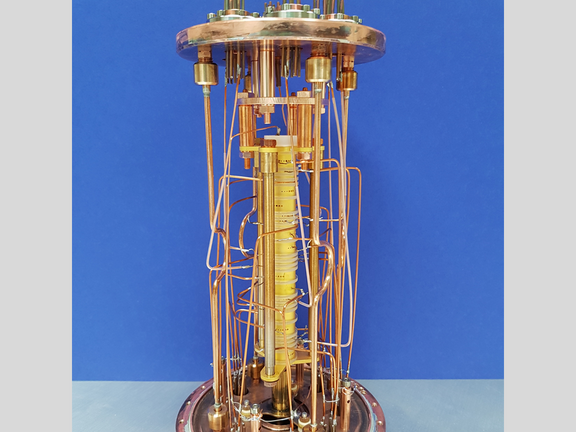Modern atomic clocks are among the most accurate measurement tools. They are the basis of advanced technology like the GPS system. The invention of the frequency comb (Nobel prize 2005) opened the path to atomic clocks using optical transitions in trapped, single, highly charged ions (HCI). Since the most recent development of frequency combs now reaches up to the extreme-ultraviolet (XUV) region, a further boost in precision is expected by the combination with XUV transitions in HCI. The advantage of such transitions are their high frequencies and small sensitivity to external perturbations. However, long-lived clock states have an extremely narrow spectral width, so they are difficult to address with a coherent laser of limited tuning range without an initial knowledge of their transition energy.
The scientific division of Klaus Blaum at the MPIK identified a metastable electronic state in highly charged lead ions which could be used as a clock state. “With the Penning-trap mass spectrometer PENTATRAP and using Einstein’s mass-energy equivalence, we directly determined the excitation energy of the metastable state in Pb41+ ions to be 31.2(8) eV (error given in parentheses)“, says PhD student Kathrin Kromer, “with a fractional mass uncertainty of 4×10–12(four parts in a trillion)this is one of the most precise mass measurements to date.”
This was combined with a theoretical work from the division of Christoph Keitel at MPIK and Paul Indelicato from the Sorbonne University, in which the transition energy was theoretically determined with two extensive, partially different ab initio multi-configuration Dirac-Hartree-Fock calculations: The result of 31.68(13) eV and 31.76(35) eV agree well with the measured value within the given errors. Chunhai Lyu, postdoc in the MPIK theory group, points out: “Our calculation yields a lifetime of 26.5(5.3) days, corresponding to an outstanding quality factor of 1.1×1023 for the transition from this metastable state to the ground state.”
The good agreement verifies the theoretical multi-electron studies and demonstrates the strength of Penning-trap mass measurements for the search of HCI clock transitions. Compared to the current optical clocks, this would enable the construction of an ultrastable clock with a stability improved by 3 to 4 orders of magnitude.
Original publication:
Observation of a low-lying metastable electronic state in highly charged lead by Penning-trap mass spectrometry
Kathrin Kromer, Chunhai Lyu, Menno Door, Pavel Filianin, Zoltán Harman, Jost Herkenhoff, Paul Indelicato, Christoph H. Keitel, Daniel Lange, Yuri N. Novikov, Christoph Schweiger, Sergey Eliseev and Klaus Blaum
Physical Review Letters 131, 223002 (2023). DOI: 10.1103/PhysRevLett.131.223002
Weblinks:
Group „Ionic Quantum Dynamics and High-Precision Theory“ at MPIK
